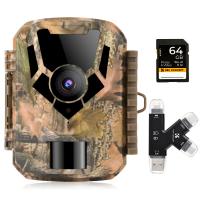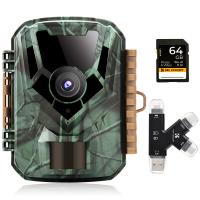How To Format Sd Card From Android?
Formatting an SD card on an Android device is a common task that many users need to perform for various reasons, such as clearing space, removing corrupted files, or preparing the card for use in another device. This article will guide you through the process of formatting an SD card on an Android device, addressing common issues and providing practical solutions to ensure a smooth experience.
Understanding the Need for Formatting an SD Card

Before diving into the steps, it's essential to understand why you might need to format an SD card. Here are some common reasons:
1. Clearing Space: Over time, SD cards can accumulate a lot of unnecessary files. Formatting the card can help free up space.
2. Removing Corrupted Files: Sometimes, files on an SD card can become corrupted, causing issues with accessing data. Formatting can resolve these issues.
3. Preparing for New Use: If you plan to use the SD card in a different device, formatting it ensures compatibility and optimal performance.
4. Improving Performance: Regularly formatting an SD card can help maintain its performance by removing fragmented files and optimizing storage.
Steps to Format an SD Card on Android

Step 1: Backup Your Data

Before formatting your SD card, it's crucial to back up any important data. Formatting will erase all data on the card, so ensure you have copies of any files you want to keep.
1. Connect to a Computer: Use a card reader to connect the SD card to your computer and copy the files to a safe location.
2. Use Cloud Storage: Alternatively, you can upload important files to cloud storage services like Google Drive or Dropbox.
Step 2: Insert the SD Card into Your Android Device

If the SD card is not already in your device, insert it into the appropriate slot. Most Android devices have a dedicated slot for SD cards, usually located near the SIM card slot.
Step 3: Access Storage Settings
1. Open Settings: Navigate to the Settings app on your Android device.
2. Find Storage: Scroll down and tap on "Storage" or "Device care" (the exact name may vary depending on your device).
Step 4: Locate the SD Card
In the Storage settings, you should see an option for your SD card. It may be listed under "Portable storage" or "SD card."
Step 5: Format the SD Card
1. Tap on the SD Card: Select the SD card from the list of storage options.
2. Access Format Option: Tap on the three-dot menu icon (usually located in the top-right corner) and select "Storage settings" or "Format."
3. Confirm Formatting: You will be prompted to confirm that you want to format the SD card. Confirm your choice, and the device will begin formatting the card.
Step 6: Wait for the Process to Complete
The formatting process may take a few minutes, depending on the size of the SD card. Once completed, the card will be ready for use.
Troubleshooting Common Issues
While formatting an SD card is generally straightforward, you may encounter some issues. Here are solutions to common problems:
Issue 1: SD Card Not Recognized
If your device does not recognize the SD card, try the following steps:
1. Reinsert the Card: Remove the SD card and reinsert it to ensure it is properly seated.
2. Check for Damage: Inspect the SD card for any physical damage. If damaged, you may need to replace it.
3. Try Another Device: Insert the SD card into another device to see if it is recognized. If not, the card may be faulty.
Issue 2: Formatting Fails
If the formatting process fails, try these solutions:
1. Restart Your Device: Sometimes, a simple restart can resolve formatting issues.
2. Use a Computer: Connect the SD card to a computer and use the computer's formatting tools to format the card.
3. Check for Write Protection: Some SD cards have a physical switch for write protection. Ensure this switch is not enabled.
Issue 3: Data Recovery
If you accidentally format an SD card and need to recover data, consider the following:
1. Stop Using the Card: Immediately stop using the SD card to prevent overwriting the data.
2. Use Recovery Software: There are various data recovery software options available, such as Recuva or DiskDigger, which can help recover lost files.
Best Practices for SD Card Maintenance
To ensure the longevity and performance of your SD card, follow these best practices:
1. Regular Backups: Regularly back up important data to avoid data loss.
2. Avoid Frequent Formatting: While formatting can help maintain performance, avoid doing it too frequently as it can wear out the card.
3. Use Quality Cards: Invest in high-quality SD cards from reputable brands to ensure reliability and performance.
4. Safely Eject: Always safely eject the SD card from your device to prevent data corruption.
Formatting an SD card on an Android device is a simple yet essential task that can help maintain the performance and reliability of your storage. By following the steps outlined in this article, you can easily format your SD card and address any common issues that may arise. Remember to back up your data before formatting and follow best practices to ensure the longevity of your SD card. With these tips, you can keep your Android device running smoothly and efficiently.










There are no comments for this blog.